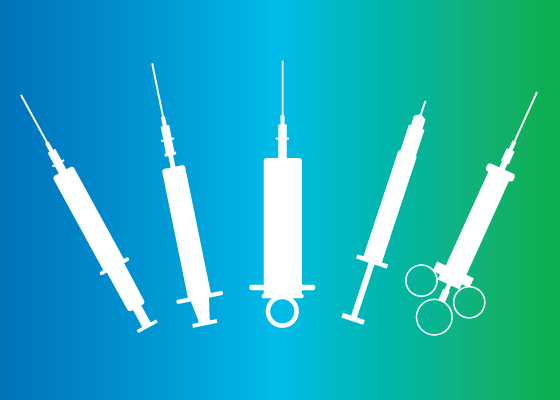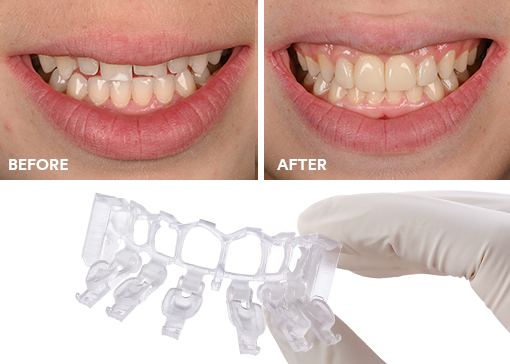Zirconia puzzle: what makes zirconia unique and how to choose the right zirconia
Zirconia may be part of your everyday vocabulary, but how much do you know about this ceramic material? Learn more…


When you select a new material, do you also evaluate the delivery system? Discover how new innovations can lead to streamlined procedures and better results.
No matter how well-developed a dental material is, its quality and handling properties are highly dependent on the design of the application system. Flaws in the system can add extra steps to the clinical workflow and negatively impact both hygiene measures and the final restoration. Thankfully, innovations in application system design have virtually eliminated some of the most common pain points.
Dental professionals know all too well that bubbles and voids in dispensed composite can negatively affect the esthetics of the final restoration. In fact, if they appear on the surface, divots are likely to develop and lead to plaque accumulation and/or discoloration over time (fig.1). Unfortunately, getting rid of the voids in composite is often difficult and time-consuming, even with an explorer – so being proactive and avoiding them is your best option.
One common source of voids is the tip of the flowable syringe. The standard Luer syringe and tip used by many composite manufacturers increases the risk of air entrapment during dispensing, which may lead to voids in the applied composite and to material run on when the syringe plunger is released (fig. 2).

Figure 1: Unsightly discoloration due to a void in an anterior composite restoration.

Figure 2: The standard Luer Tip design with sharp f internal angles promotes air entrapment.
Air can also become trapped at the back of the syringe when it is filled by the manufacturer (fig. 3). During dispensing, the trapped air is compressed, and as soon as the plunger is released, the air expands and the material is pressed forward, leading to messy run-on and waste.

Figure 3: Standard Luer design with the possibility of air entrapment at the back of the syringe.
To address both these issues, 3M designed a proprietary syringe and tip for 3M™ Filtek™ Supreme Flowable Restorative and 3M™ Filtek™ Bulk Fill Flowable Restorative. The new tip is smooth, without any sharp internal angles (fig. 4), while the back of the syringe is equipped with channels that release entrapped air during dispensing (fig. 5).

Figure 4: New tip designed by 3M with smooth internal contours to minimize paste turbulence and reduce voids.

Figure 5: New syringe designed by 3M with release channels to eliminate air entrapment during the syringe filling process.
In a clinical environment, this new syringe design ensures that the dispensed material is virtually free of air bubbles (fig. 6). And the less air in the syringe, the less material run-on – reducing mess and waste.

Figure 6: Voids are clearly visible in the material applied with the standard Luer Syringe and Tip (left), whereas there are virtually no voids present in the composite applied with the new 3M flowable syringe design (right).
Bulky syringes, inflexible nozzles – it is not always easy to apply material exactly where needed in a deep posterior cavity or root canal. Precision placement, however, is vital to the quality of the final restoration.
That’s why 3M focused on a smart nozzle and tip design when developing the proprietary application systems for its innovative flowable composites and new universal resin cement (3M™ RelyX™ Universal Resin Cement). The flowable syringe features a long, easy to bend cannula that resists kinking and leakage and helps improve access to hard-to-reach preparations (figs. 7 and 8).

Figure 7: Cannula of the Luer Tip (left) and the 3M Tip (right). The pre-bent 3M tip improves access to hard-to-reach areas.

Figure 8: Kinking and leakage of the Luer Tip cannula after bending (left). In contrast, the bent cannula of the newly designed 3M Tip does not leak and material extrusion is still possible after bending (right).
And in the case of the new 3M™ RelyX™ Universal Automix Syringe, the design was optimized to improve access while reducing waste. Unlike standard automix syringes, RelyX Universal Automix Syringe is as small as a flowable syringe (fig. 9). It can be rotated in any direction, and its Micro Mixing Tip is tiny and pre-bent to facilitate access to hard-to-reach areas. The small syringe size not only reduces the distance between the hand and the tip to support precise material application, but it also helps reduce plastic waste. In addition to these benefits, the syringe design features a self-sealing mechanism to improve hygiene and an innovative mixing tip designed to reduce both plastic and cement waste, while improving delivery.
To learn more about the new RelyX Universal Automix Syringe, check out our article: 5 new ways to squeeze the most out of your automix syringe.
 Figure 9: The 3M™ RelyX™ Universal Automix Syringe has a size similar to a flowable composite syringe and may be rotated in every direction.
Figure 9: The 3M™ RelyX™ Universal Automix Syringe has a size similar to a flowable composite syringe and may be rotated in every direction.
When considering a switch to a new dental material, it’s worth comparing application systems as well as material properties. Applications systems have a huge impact on handling, ease of use and even material performance, and a well-designed system will help you get the most out of your selected product.

Zirconia may be part of your everyday vocabulary, but how much do you know about this ceramic material? Learn more…

Achieving the correct shape is vital to a natural-looking anterior composite restoration. Learn how the 3M™ Filtek™ Matrix, paired with…

Direct composite restorative procedures can be challenging, particularly when it comes to esthetic cases. Discover how new techniques and tools…